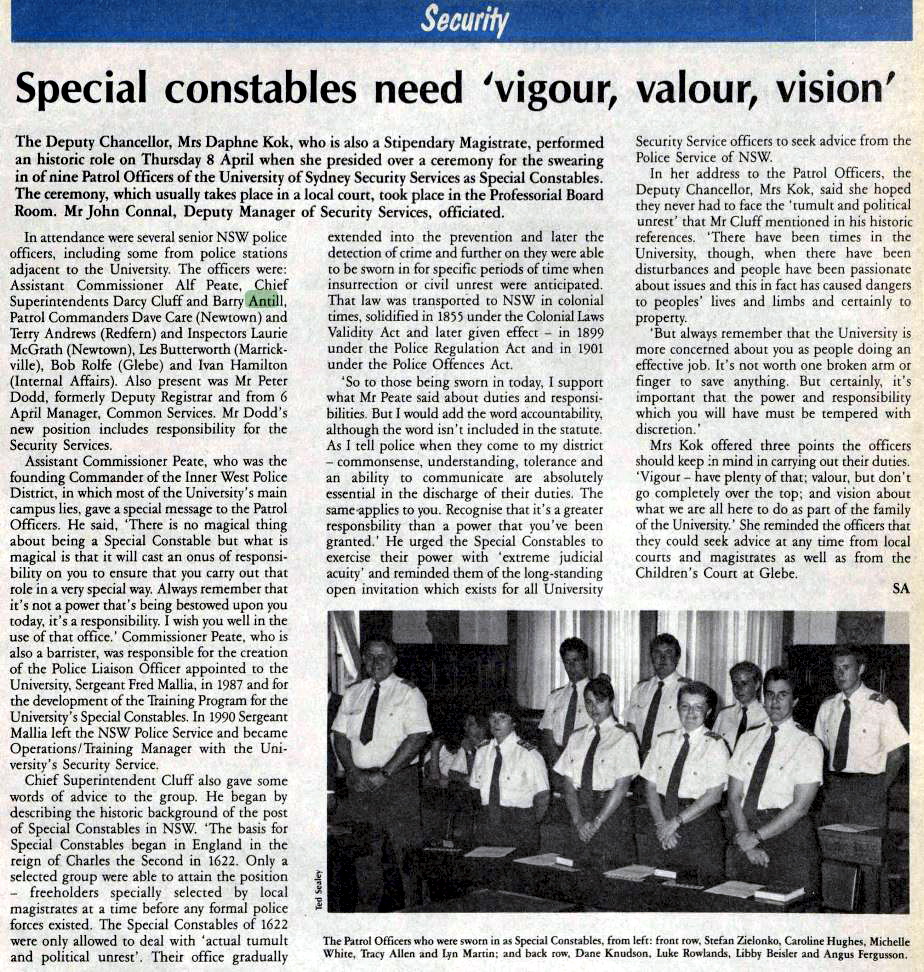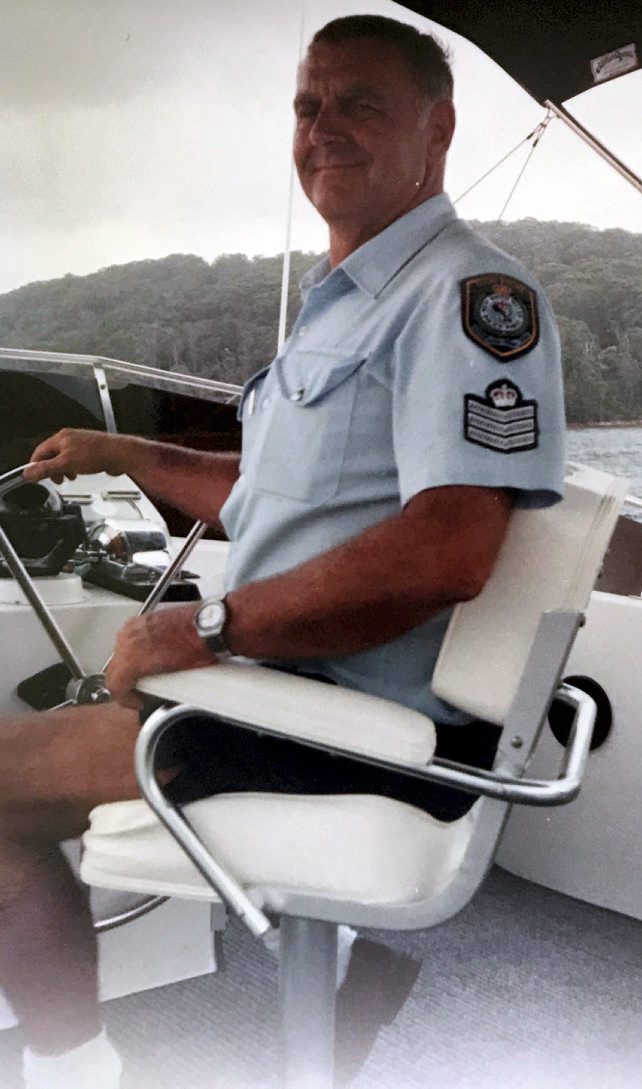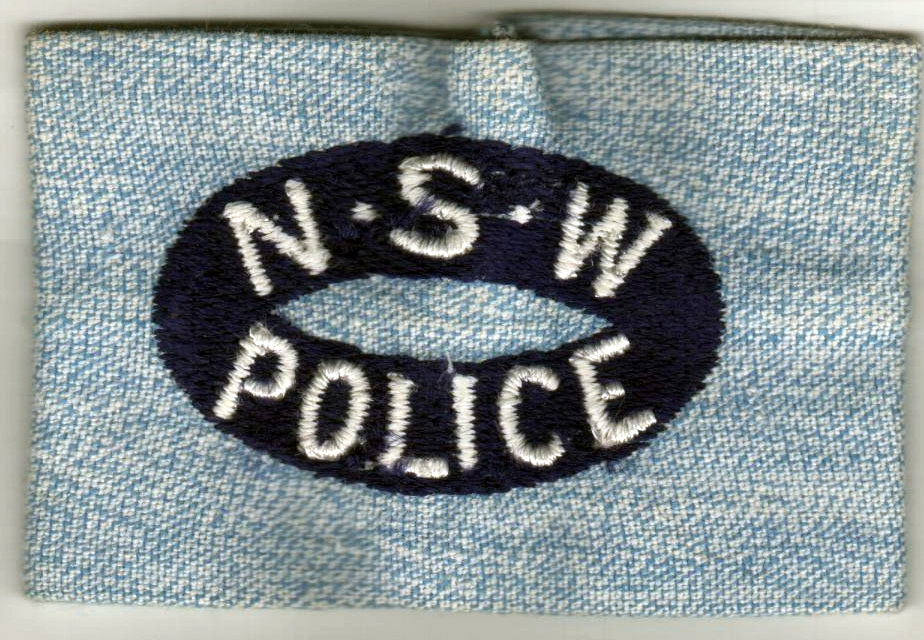Barry ANTILL
Barry ANTILL
AKA ?
Late of Goonellabah, NSW
NSW Redfern or Penrith Police Academy Class # ? ? ?
NSW Police Cadet # 1168
New South Wales Police Force
[alert_yellow]Regd. # 8798[/alert_yellow]
Rank: NSW Police Cadet – commenced Friday 18 February 1955
( Friday is an unusual date to start & may be incorrect )
Probationary Constable – appointed 17 July 1957
Detective Constable 1st Class – appointed 17 July 1963
Detective Senior Constable – appointed 1 July 1968
Detective Sergeant 3rd Class – appointed 5 August 1973
Detective Superintendent – appointed 30 March 1988
Detective Chief Superintendent – appointed ? ? ?
Final Rank = Detective Chief Superintendent
Stations: ?, Western District ( Cst 1/c ), Lithgow ( 1962 – 1970’s Det Cst ), Northern Rivers Police Command ( Oct 1993 – Retirement )
Service: From 18 February 1955 to 6 October 1993 = 38+ years Service
Awards: National Medal – granted 4 November 1992 ( C/Supt )
Police Overseas Service Medal – Clasp CYPRUS – granted 8 July 1992 ( SenCon )
Born: Sunday 17 July 1938
Died on: Saturday 11 May 2019
Age: 80
Cause: ?
Event location: ?
Event date: ?
Funeral date: Thursday 23 May 2019 @ 11am
Funeral location: Parkview Funeral Home, 43 Holland St, Goonellabah, NSW
In lieu of flowers donations to St Vincent’s Hospital Renal Dialysis Unit would be appreciated and may be left at the service.
Wake location: ?
Funeral Parlour: Parkview Funerals, Lismore 1800 809336
Buried at: ?
Memorial located at: ?

[alert_yellow] BARRY is NOT mentioned on the Police Wall of Remembrance[/alert_yellow] *NEED MORE INFO
[divider_dotted]
Funeral location: [codepeople-post-map]
[divider_dotted]
FURTHER INFORMATION IS NEEDED ABOUT THIS PERSON, THEIR LIFE, THEIR CAREER AND THEIR DEATH.
PLEASE SEND PHOTOS AND INFORMATION TO Cal
[divider_dotted]
May they forever Rest In Peace
[divider_dotted]
It is with regret that we advise of the passing of Barry Antill, a NSW member of the 2nd Contingent to Cyprus (1965-66).
Barry passed away on 11 May 2019, aged 80 years.
His funeral will be held at 11am on Tuesday, 23 May 2019 at the Richmond Chapel, Parkview Funeral Home, 43 Holland Street, Goonellabah (near Lismore) NSW.
On behalf of the UNOPAA National Executive, our National Committee, our NSW Branch and all members of UNOPAA, I would like to acknowledge Barry’s service, particularly to overseas peacekeeping, and to express our sympathy to his family, his contingent colleagues and his friends.
P McD
Peter McDonald
National Secretary/Treasurer
United Nations & Overseas Policing Association of Australia (UNOPAA)
In loving memory of …. Barry Antill …. Sadly, Barry passed away on Saturday 11th May 2019, aged 80 years.
He is survived by his daughter Toni-lea and grand-daughters Tashara-lea and Morgan-lea.
In lieu of flowers donations to St Vincent’s Hospital Renal Dialysis Unit would be appreciated and may be left at the service.
Parkview Funeral Home – Lismore
43 Holland Street,
Goonellabah NSW 2480
Another lost link
IT’S evident from the number of social media posts that there are many in our community who well remember – some for better reasons than others – one time local cop Barry Antill.
Barry, who died last week on the North Coast in his 80th year, was a member of a team of detectives stationed in Lithgow in the 1960s and 70s.
It was a less uptight time with a better class of crooks, no “Ice Age”, and when the cops interacted both officially and socially with the general community where they worked and resided.
Most became household names.
Barry ended his police career as Detective Superintendent in charge of the Northern Rivers Command and set up home at Goonelebah.
He is survived by one daughter.
Families’ pride in drivers who prevented disaster
While the so-called “Lithgow Plot” to assassinate Queen Elizabeth, revealed by The Daily Telegraph yesterday, may have been a national secret, among the Rowleys it was the stuff of family legend.
Mr Rowley and train driver Robert Arthur Walkington, who also played a part in preventing a catastrophic derailment near Lithgow in 1970, were later awarded Imperial Service Medals, issued from St James’s Palace.
Both men have since died but their families yesterday recalled how their heroic actions, revealed this week, prevented the derailment of the Royal Train carrying the Queen and Prince Philip to Orange on April 29.
Mr Rowley’s daughter Trish Bellini said yesterday: “He was certainly up there in the front of the train. He told us he was driving the Queen, he had his Queen on board and he spotted the log.
“He said she never flew out of her bunk. It was very secret. He said to me ‘I drove very, very slowly’. He was a beautiful man. He was a very humble man.”
Mr Rowley, who died in 1990, started work on the railways as an 11-year-old. His job was to wake up workers for their early shifts.
His granddaughter Kara Pryor has proudly kept the medal and her grandfather’s Royal Train boarding pass at her Sydney home.
Mr Walkington was also one of the top train drivers in the state and assigned to the royal visit.
His brother Norman was unsure yesterday whether he was in the Royal Train or the sweeper train which travelled ahead.
“There was a great deal of hush, hush about it. I think he drove the train that was supposed to clear the track, they awarded him the Imperial Service Medal for his actions,” Mr Walkington said.
“It wasn’t until the 1980s that I knew anything about it. Special forces came to see him and frightened the living daylights out of Mavis, my sister-in-law. He never really spoke to me or the family about it.”
Paperwork relating to the investigation has been stored in archives and RailCorp was unable to provide any information about the drivers yesterday due to “process and procedures”.
“It worried me a lot that sort of thing could happen in a sleepy little town,” former Chief Superintendent Barry Antill, who investigated the case, said yesterday.
Assassination attempt: claim corroborated
A retired senior detective, Detective Superintendent Cliff McHardy, 81, has claimed that unidentified conspirators put a wooden log on a railway track to try to derail the official train transporting the Queen and Duke of Edinburgh from Sydney across Australia’s Great Dividing Range of mountains. Since the original story, two other officers have come forward to corroborate this. They are former Chief Superintendent Barry Antill, 70, and former Detective Senior Sergeant Doug Bentley, 69.
According to Bonnie Malkin and Andrew Pierce in the London Daily Telegraph of 27 January, this incident lacked the precision and detailed planning of some other better known assassination attempts on world leaders. As for the train, after it struck the log it was merely forced to slow and came safely to a halt at a level crossing.
The report says “the so-called Republican plot” was revealed when retired Detective Superintendent Cliff McHardy, 81, decided to break his silence in an interview in his local newspaper to try to clear-up one of the great unsolved mysteries of his long police career. He said that on 29 April 1970, The Queen and the Duke were travelling by train to Orange in New South Wales.
When the train entered a winding cutting near Lithgow, two hours to the west of Sydney, it struck a large log wedged across the rails. From his investigations she concluded this was an act of deliberate sabotage to force the train off the tracks. Fortunately the train driver was moving unusually slowly.
“If the train had reached its normal speed it would have plunged off the tracks and into an embankment,” Mr. McHardy said. The log became stuck underneath the front wheels for 200 metres before the train, largely undamaged, came to a halt at a level crossing.
…tracked checked one hour earlier….
A security “sweeper” train had checked the line an hour before and had found nothing. He concluded that the assassins had knowledge of the official train’s schedule.
He told The Daily Telegraph: “The log had been moved onto the line in darkness, by one or two people who had prior knowledge of the area,” he said. “Vandals couldn’t have been involved because there’s no pub nearby, so you couldn’t put it down to hoodlum behaviour. It was pre-planned.”
Mr McHardy and two detectives interviewed witnesses including railway employees and local people but no arrests were made. The Lithgow Mercury says Australian Irish Republican Army sympathisers were among those questioned. Mr McHardy said the incident was covered-up by the government which issued a suppression order.
“They said keep it out of the press because The Queen is still out here and if it had broken the next morning there would have been all sorts of trouble and we can do without that in a small country town,” said Mr McHardy.
He said that he had decided to speak out now in the hope that “it would prompt the people responsible to come forward and own up”.
The rest of the trip unfolded without incident and hundreds of well-wishers turned out in Orange to greet the young Queen and Duke. A spokesman for Buckingham Palace declined to comment but said the archives for the trip showed no records of the train hitting a log.
LITHGOW: ATTEMPT TO DERAIL THE QUEEN’S TRAIN
On the night of 29 April 1970, an event occurred on the rail corridor through Lithgow that had the potential to change the course of world history (reports Orange‟s Central Western Daily,22January 2009).
“It was an incident on such a scale of international significance that an ironcast wall of secrecy was thrown up by Federal and State authorities when they responded to a curious media who had been hearing whispers‟something was amiss,”writes Len Ashworth, editor of the Lithgow Mercury, a sister paper to the Orange paper.
When Det Sgt Cliff McHardy received a phone call that night the implications were immediate; someone had made a serious attempt to derail the Royal Train that was conveying Queen Elizabeth and Prince Phillip to Orange. Long retired after 11 years in charge of Lithgow detectives, McHardy –who left the Force with the rank of detective superintendent – has now recounted his memories of the frantic investigations and bemoaned the fact that the culprit was “one that got away‟.
On the night of the drama the Queen and the Duke of Edinburgh were travelling on what was known as the Commissioner’s Train. The security largely consisted of uniformed police who were ordered to man every railway station along the route and railway personnel on duty at every level crossing. On board were members of the Royal entourage and federal and special branch police. The schedule was for the train to spend the night under tighter security in a siding at Orange, ready for a two-and-a-half hour visit next day. The train almost did not make it. As it passed at speed through a winding cutting at Bowenfels the locomotive struck a large log that had been placed across the tracks.
The train continued under brakes for about 200 metres with the log wedged under the front wheels before finally coming to a halt at the level crossing near Bowenfels station.
When Det Sgt McHardy and Detectives Barry Antill and Doug Bentley arrived they found the hardwood log had not splintered under the heavy impact and had deep indentations from the locomotive wheels. But the locomotive had remained on track and largely unscathed.
The attempt to derail the train was no spur-of-the-moment example of vandalism taken to the extreme. Whoever was responsible had surveyed the area as marks indicated where the log had previously been resting at the top of the embankment in an area not often frequented by the public. It had been rolled from there onto the tracks and manoeuvred into place, possibly by more than one person.
The offenders had also been aware of the time schedule for not only the Royal Train but a security “sweeper‟ locomotive that had gone through a short time earlier to guard against just such an incident. The obstruction was placed on the tracks sometime between the passing of the sweep and the arrival in the cutting of the train carrying the British Monarch and her husband to Orange.
There were numerous suspects and theories but the perpetrators of the attempt to derail the Queen’s train were never found.
While the hunt for the culprit was underway Government officials were as much concerned about the embarrassment to Australia if the story leaked as they were with the incident itself.
Government gags were placed on the release of any information to the public. “I was constantly reassuring my superiors that the local media would cooperate if we asked them to,”McHardy said. “I told them that the editor of the Lithgow Mercury, Bede Leighton, was man of total integrity who would abide by his word when told anything in confidence. “They were used to dealing with the Sydney media and remained sceptical. ”But the official suppression order worked and there was never a mention of the incident, even though most Lithgow railwaymen knew of the incident. They obeyed from their department to say nothing.
Pause tomorrow to honour Diggers

By Kimberley Smith news@northernstar.com.au
AT 11am tomorrow we pause to remember the sacrifice of the men and women who served our country in wars and conflicts during the past 100 years.
In the lead-up to November 11 every year, local RSL sub-branches sell red poppies, pens and badges to help the organisations which undertake welfare work.
NSW State President of the Returned Services League Don Rowe said the RSL had worked hard for the welfare of the veteran community and every dollar raised by poppy sales would go to that cause.
“I urge all Australians to wear a poppy with pride and respect for those who answered the call of their country,” he said.
Mr Rowe said the death of the first Australian in combat in Afghanistan last month was a special reason to pause on Sunday.
Today and tomorrow, volunteers will be at shopping centres and businesses in the hope of selling $2 poppies to Australians who would like to make a small, yet significant, contribution.
The Far North Coast Legacy Club makes its contribution by supporting widows and dependants of deceased ex-servicemen who live on the Far North Coast, helping them with health and welfare issues.
Tomorrow ceremonies will be held in most towns on the Northern Rivers for communities to come together and remember.

Police Officers attached to Lithgow Police Station celebrating 100 years of Policing in New South Wales.
Back row ( L-R): Cst 1/c Rex REES, Cst John GALLAGHER, SenCon Ray BARTHOLOMEW, Cst 1/c Gordon WEAVER, Cst Pat SMITH, SenCon Jim WIGG, SenCon Ron FIRTH, SenCon Pat HICKSON, Cst Leo LOWE, Cst 1/c Allan PATTIGREW, Cst Doug BENTLEY, Cst Bob DUNN, Det Cst Barry ANTILL # 8798, Cst 1/c Alf SUMMERS, Cst Les BURTON, Cst 1/c Ernie KELLY
Front Row (L-R): Sgt Eric DOOLAN, Sgt Allan WOODS, Sgt Bob MacDONALD, Insp Reg CROWHURST, Sgt 1/c Wally JOB, Sgt Fred WELSH, Sgt 2/c John PARKINSON, Det Sgt Bill HERON
Motor Cyclists: Cst Mick BLACKBURN, Cst 1/c John GEORGE, SenCon George GREAVES




